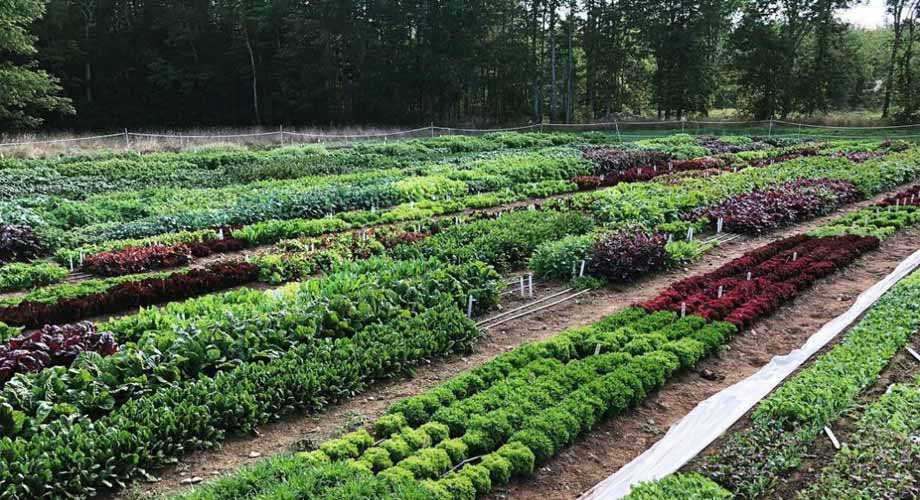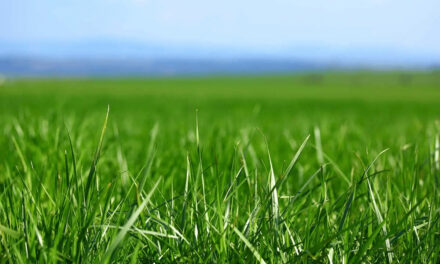When we think about growing our own food, we often visualize a garden lush with vibrant veggies ready for harvest at the same time. While this picture is gratifying, it's not necessarily practical. Harvesting all your crops at once can lead to an overwhelming abundance, leaving you scrambling to consume or preserve your bounty before it spoils. Enter succession planting — a gardening technique designed to ensure a steady and spread-out harvest throughout the growing season. Let's delve deeper into this concept.

What is Succession Planting?
Succession planting is the practice of sowing crops in staggered intervals rather than all at once, ensuring a continuous harvest. This approach allows gardeners to maximize their garden's productivity, reduce wastage, and enjoy fresh produce throughout the season.
The Benefits of Succession Planting:
- Extended Harvest: A primary advantage is the prolonged harvest period. Instead of getting a single large harvest, you get multiple smaller harvests, allowing you to enjoy fresh produce for a more extended period.
- Efficient Use of Space: As early-season crops finish, you can replace them with later-season crops, ensuring that garden space is always in production.
- Disease and Pest Management: By not having a large volume of a single crop maturing at once, you can minimize the risk of losing the entire harvest to pests or diseases.
- Soil Health: Different crops have different nutrient requirements. By rotating crops, you can help balance the soil's nutrient levels.
How to Implement Succession Planting:
- Know Your Crops: Familiarize yourself with the maturity dates of different plants. Fast-growing crops like radishes or lettuce can be planted multiple times in a season, while slower-growing ones like tomatoes or peppers might only be planted once.
- Plan Ahead: Create a planting calendar. Mark down when you'll plant each crop and when you expect to harvest them. Adjust based on your local growing conditions and historical data.
- Optimize Space: As one crop is harvested, prepare the soil and plant the next one. Ensure that your garden beds are never left empty.
- Rotate Crops: It's a good practice to not plant the same family of crops in the same spot consecutively. This can help prevent soil-borne diseases and pests.
- Be Flexible: Nature can be unpredictable. Weather conditions, pests, or other unforeseen challenges may arise. Be prepared to adjust your plans as needed.
Succession Planting Strategies:
- Same Crop, Staggered Planting: Plant the same crop every 2-3 weeks. This works well for crops like lettuce, radishes, and beans, ensuring that you have a fresh supply throughout the season.
- Sequential Planting of Different Crops: After harvesting a spring crop like spinach, plant a summer crop like beans in the same spot.
- Relay Planting: Plant crops with different maturity dates side by side. As the faster-maturing crop is harvested, the slower-maturing one expands to utilize the available space.
Understanding the Crops: Growth Duration and Temperature Needs
A successful succession planting plan hinges on understanding your crops. Every vegetable has its preferred temperature range:
- Cool-Season Crops: These include lettuce, radishes, peas, and spinach. They can be sown in early spring and late summer for a fall harvest.
- Warm-Season Crops: Tomatoes, beans, corn, and peppers thrive in the heat of mid-summer. They can't handle frost, so ensuring they’re planted after the last expected frost date is crucial.
By knowing the temperature preferences and growth duration of your crops, you can seamlessly transition from one vegetable to the next.
Expanding on the Planning Stage
A detailed gardening journal can be your best friend:
- Historical Data: Note the first and last frost dates from previous years. This helps in predicting safe planting times.
- Planting Dates: For each crop, jot down when you plant it and when it starts producing. Over time, this will give you a clear picture of your garden's rhythms.
- Garden Layout: Create a visual representation of your garden beds. Mark where each crop will go and its successor.
Enhancing Soil Health
For continual planting, the soil’s health and fertility are paramount:
- Composting: After harvesting one crop, it’s beneficial to add compost before planting the next. This replenishes the soil with vital nutrients.
- Cover Crops: In periods where you don’t have a vegetable crop, consider planting cover crops like clover or rye. They suppress weeds, prevent soil erosion, and, when dug in, enrich the soil.
Succession Planting Examples
- Spring to Summer: Begin with cool-season crops like spinach and radishes. As they finish, transition to warm-season crops like bush beans. Once the beans have been harvested, you might have space and time for another round of cool-season crops as the temperatures start to drop in late summer.
- Intercropping: This is a more advanced form of succession planting. Here, you plant two crops in the same space with different growth rates. For instance, you could plant slower-growing Brussels sprouts and faster-growing lettuce together. By the time the Brussels sprouts need more space, the lettuce will have been harvested.
Addressing Challenges
Like any gardening technique, succession planting comes with its challenges:
- Pest Management: While succession planting can minimize pest problems, it doesn’t eliminate them. Observing and noting pest patterns in your journal can help in strategizing. For instance, if you notice aphids becoming a consistent problem with your peas, consider planting garlic or onions nearby, which can repel these pests.
- Watering Needs: Different plants have varying water requirements. Ensure that you adjust your watering routine to cater to the needs of the new crops you introduce.
- Unpredictable Weather: Sometimes, an unexpected cold snap or heatwave can throw a wrench in your plans. Using protective covers or shade cloth can help navigate these surprises.
Succession planting is both an art and a science. While understanding the basic principles is essential, every garden is unique, and you'll find that observing, adjusting, and learning from each season's experiences are equally crucial. With a bit of planning, flexibility, and understanding, your garden can be a hub of continuous production, providing you with fresh, home-grown produce throughout the season.



















